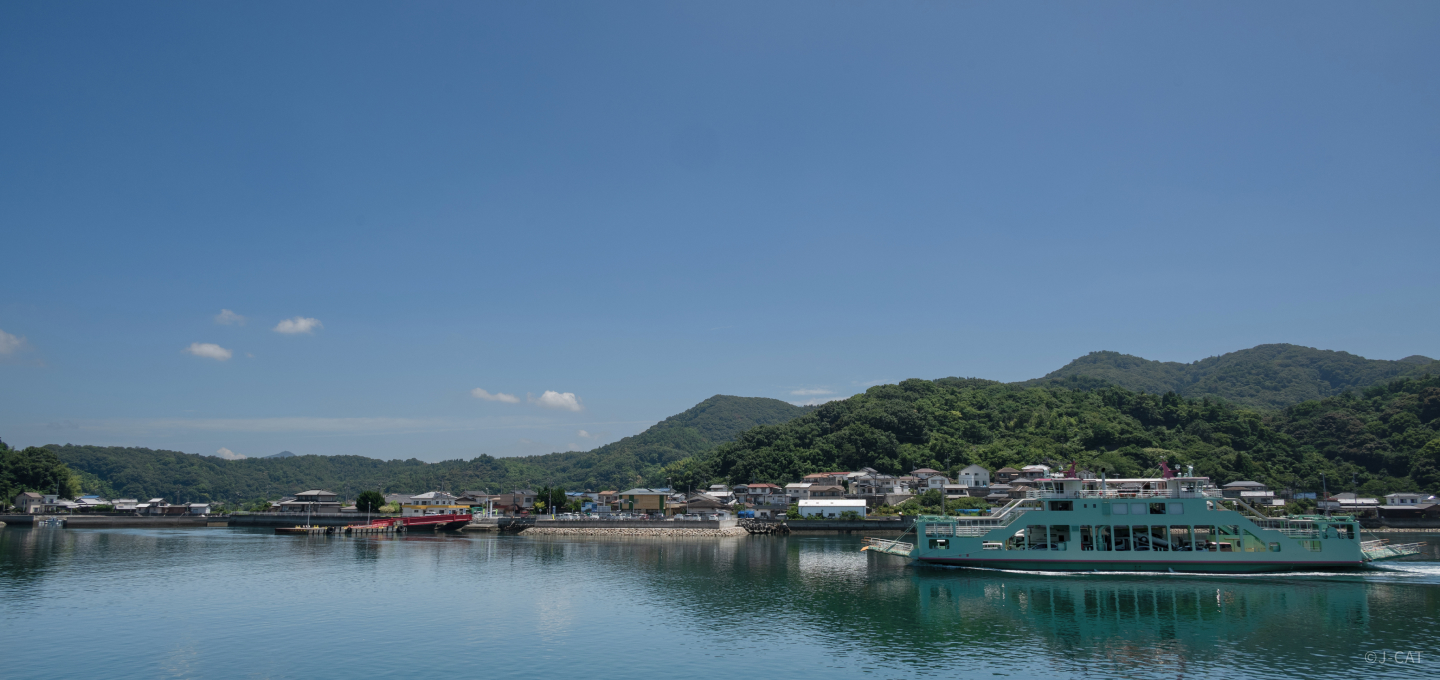
Special Experience
Hiroshima/Onomichi
Tour a Historic Soy Sauce Brewery, and Taste Natural Soy Sauce Aged in Century-old Wooden Barrels on a Remote Island in the Seto Inland Sea


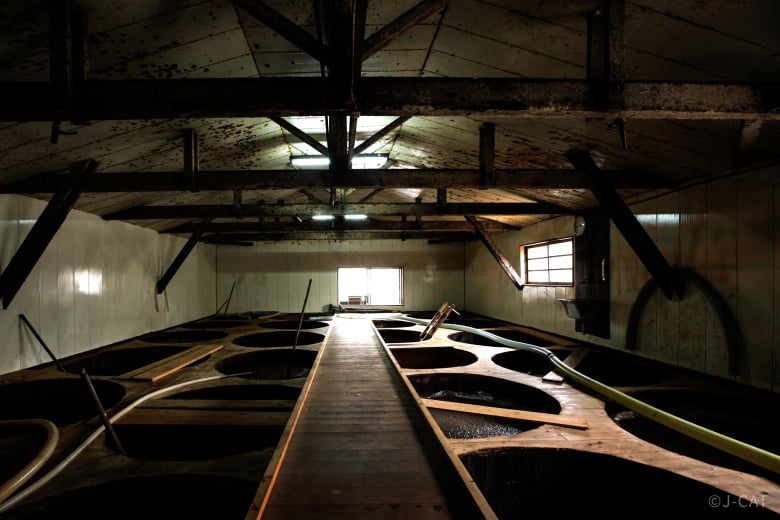
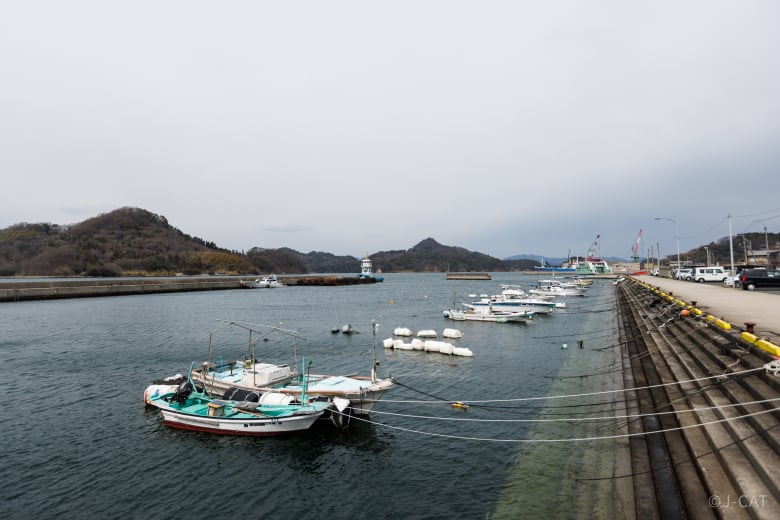
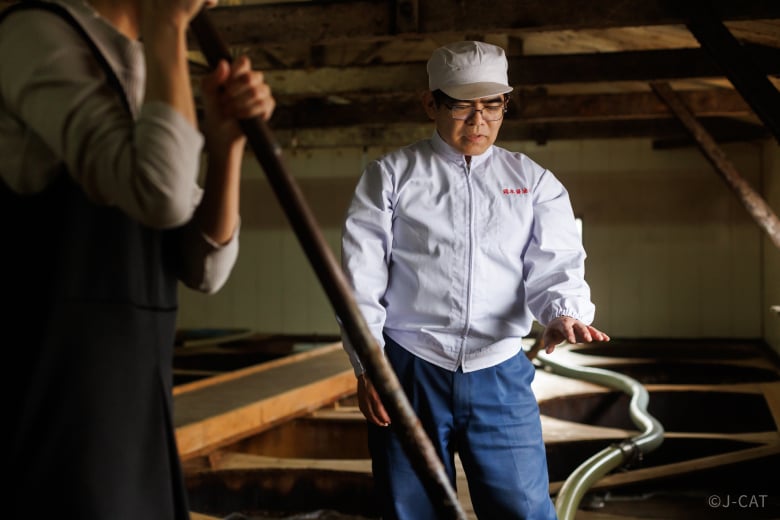
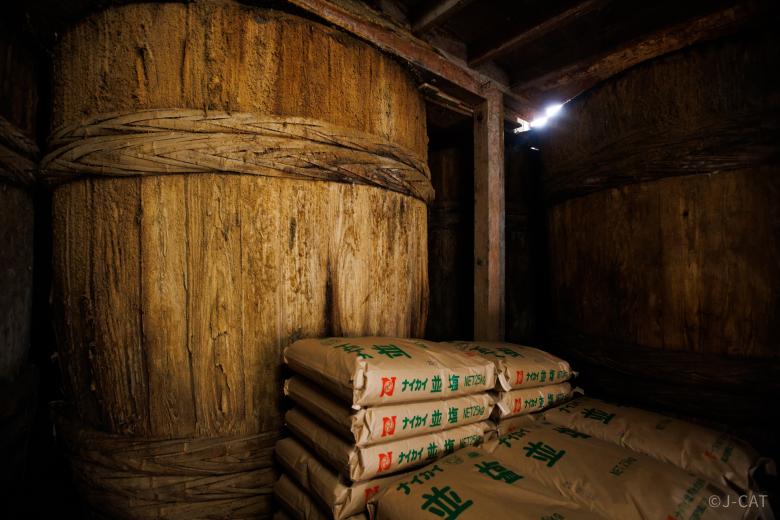
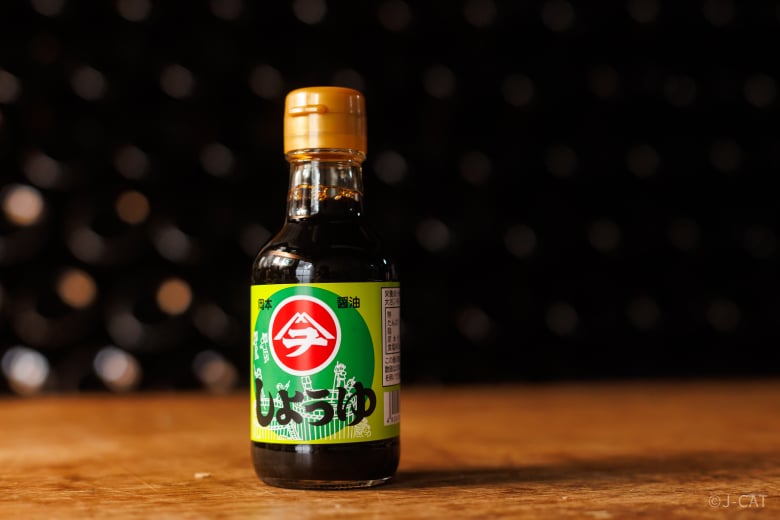

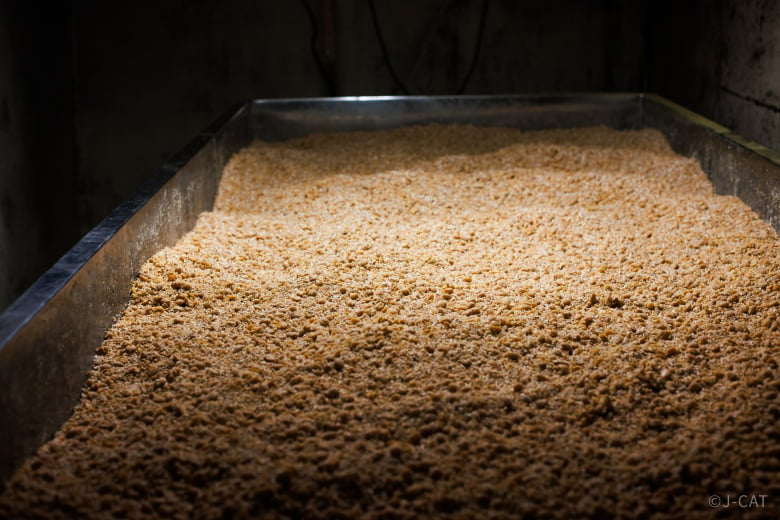
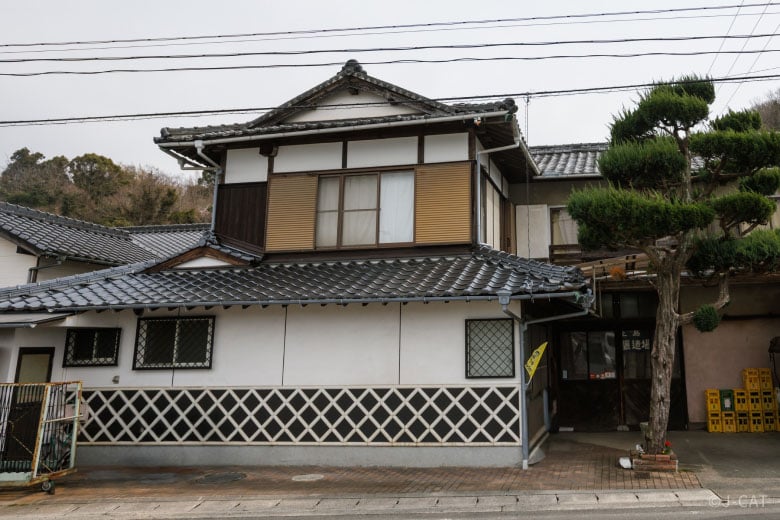
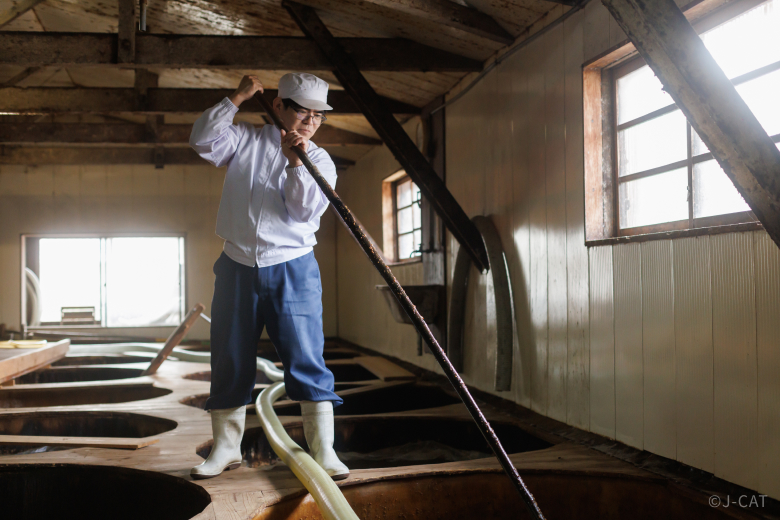

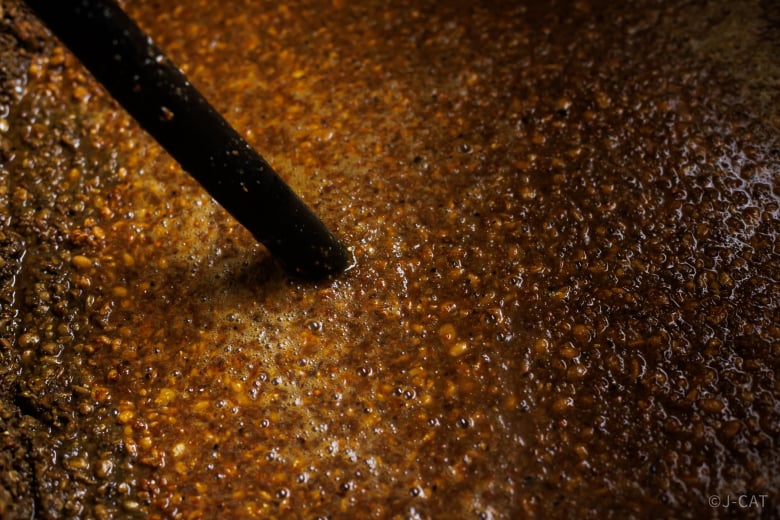
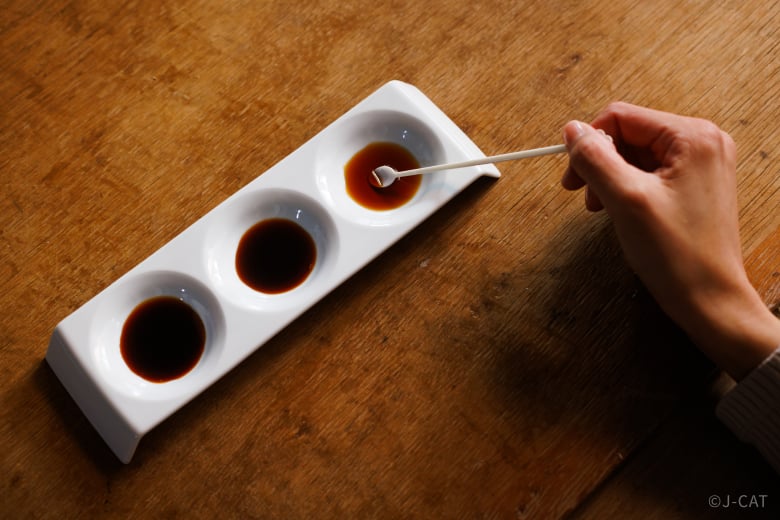
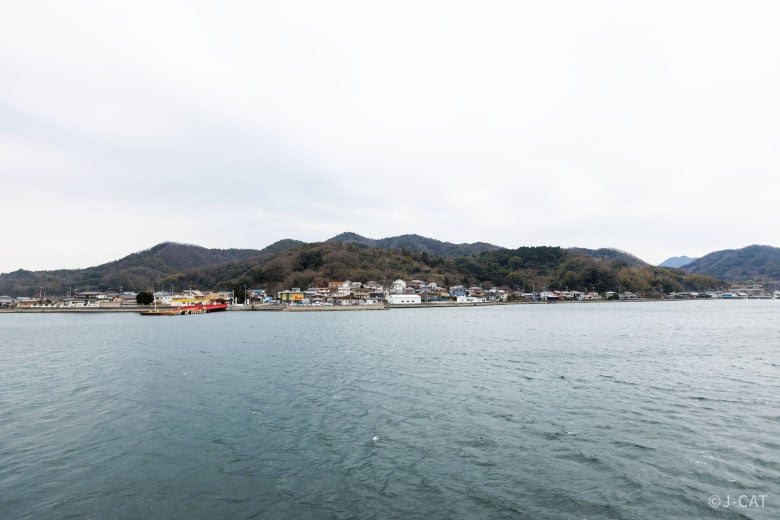
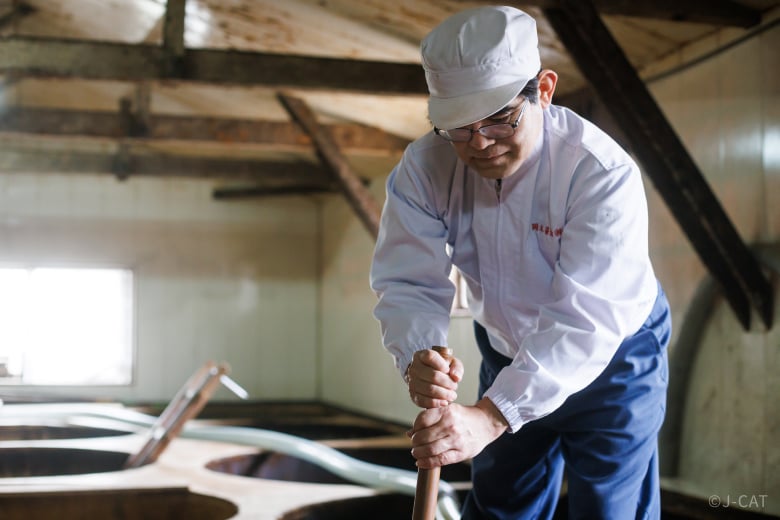

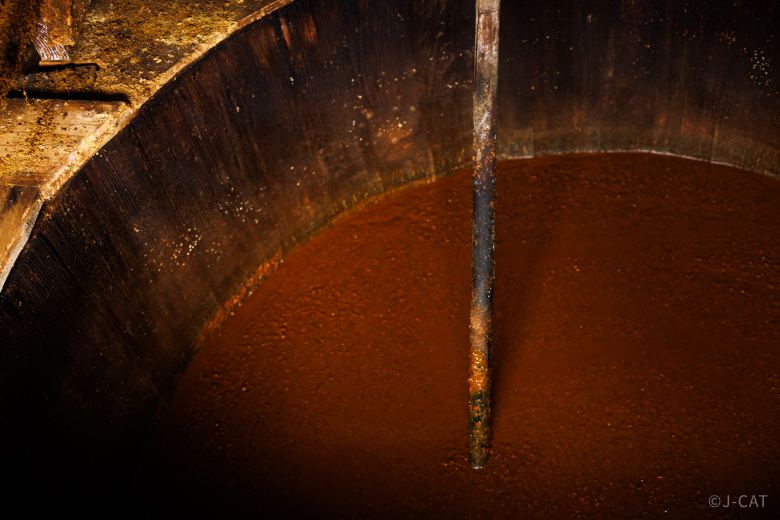




















Overview
Founded in 1932, Okamoto is today the only soy sauce brewery on the remote island of Osakikamijima in the Seto Inland Sea. Here, head brewer Yasufumi Okamoto brews with commitment to natural methods, preserving the traditional flavor of soy sauce as it has been handed down for generations. Tour this historic soy sauce brewery and enjoy an especially rare opportunity to participate in the mixing of the moromi mash. Discover the heritage charm of Okamoto soy sauce through a tasting of three different types of its soy sauce.
Key Features
・Tour the historic Okamoto Soy Sauce Brewery of Hiroshima Prefecture, founded in 1932, with company head Yasufumi Okamoto as your guide in this private experience
・Mix the unfiltered moromi mash yourself – a rare experience for non-professionals anywhere in Japan
・Learn about the differences between soy sauce varieties and sample 3 types
・Take home a mini bottle of exclusive drip-extracted Okamoto soy sauce that can’t be gotten anywhere else, with a recommended usage recipe
Hiroshima/Onomichi
80mins
from ¥25,000 /person
1 - 6 participants
Available in English
Cancel free up to 4 days prior
Details
Wood Barrel Aged, Traditionally Brewed Soy Sauce
Okamoto Soy Sauce Brewery sits on the remote island of Osakikamijima in the Seto Inland Sea, a 30 minute ferry ride from Hiroshima’s Takehara Port. Despite having a population of only 7,000, the island was once home to 11 different soy sauce breweries. As they began to close, Okamoto Soy Sauce Brewery procured their heritage wooden barrels, mixing paddles, and other tools used for over a century to continue the craft.

An old cedar barrel inherited from another brewery that once operated here
Though it is now the only soy sauce brewery on the island, Okamoto carries on this legacy and serves as a repository of historic brewery tools from across the island, using them to craft soy sauce using natural fermentation. In this method, fermentation and aging are conducted with natural environmental fluctuations in temperature. Third-generation brewer Yasufumi Okamoto realized the true value of such traditional, naturally brewed soy sauce when he left his island home to attend university, and it inspired him to return to his roots and take up the meticulous traditional brewing methods of those who had come before. He explains: “I thought if I was going to make soy sauce, then I wanted to do it with traditional methods, even if that took more time and effort.”

Okamoto Brewery sits facing the unfurling coastline of the Seto Inland Sea
Soy Sauce Naturally Brewed from Soybeans, Wheat, and Salt
Get an up-close look at the work being done in the brewery tour, with detailed explanations of the brewing process. Soy sauce is brewed from the basic ingredients of soybeans, wheat, and salt, and Okamoto uses domestic Japanese produce for all of his brewing. The vital koji fungus used in the brewing process reaches its peak season from November to April, imparting a richness of flavor and aroma to the soy sauce.

Okamoto offers detailed explanations on the varieties of soy sauce
Koji (Aspergillus oryzae) is produced by mixing steamed soybeans with roasted and crushed wheat, growing over them as a mold for a period of roughly three days. Depending on the timing of your visit, you may even get to peek inside the kojimuro room where this growing is done. But because this is a delicate fungus, no one is allowed into the room if they have eaten fermented natto soybeans in the day prior to the tour, in order to avoid contaminating the koji. With this fungus, Okamoto produces three varieties of soy sauce: koikuchi (dark), usukuchi (light), and saishikomi (double-brewed).

Koji growing on a mixture of soybeans and wheat in a room with strictly controlled temperature and humidity
Mixing 3 Tons of Moromi Mash to Achieve the Perfect Brew
When the tour is over, experience mixing the moromi mash yourself. Moromi is made from koji and salt water, forming a base that is aged before soy sauce is extracted from it. You can try your hand at wielding the long kaibo bamboo paddle to mix over three tons of moromi in its huge 3,600 liter barrel, and feel the physicality of this natural brewing work.

Okamoto mixing moromi with a kaibo paddle that is taller than he is
Different barrels reveal the effects of different aging periods on the moromi, offering a close look at the change over time. In the beginning, the soybeans and grains of wheat are distinctly visible. As the mash matures, it develops a smoother, more homogenous and paste-like consistency. As you’ll see when you try paddle-mixing, this difference in consistency directly translates to a difference in resistance against the paddle.

Moromi feels heaviest against the paddle early in the aging process, when the differentiated ingredients are still visible
With artificial temperature control, soy sauce is often aged for about six months to completion. Okamoto favors natural aging, however, which takes advantage of seasonal temperature fluctuations and harnesses the seaside and mountain winds, circulating them within the brewery to nurture the microbes in the mash. This process takes one to two years. You can feel this wind circulation yourself as you walk among the barrels and the storehouse equipment, and see firsthand how the rich natural environment of Osakikamijima fosters the rich flavors of Okamoto’s soy sauce.

Experience the interchange of mountain winds and sea breeze in the brewery’s breezeway
Tasting the Difference in Flavors in Soy Sauce
Finally, enjoy a tasting of the three types of soy sauce Okamoto brews: koikuchi (dark), usukuchi (light), and saishikomi (double-brewed). Experience the difference in the bouquet and palate from each, and learn about the differences in how they are brewed. Saishikomi is robust and flavorful, produced by replacing the salt water in the aging process with soy sauce and aging for the longest period. Usukuchi is the mildest, best for soups and vegetables, while the richness of koikuchi makes it perfect for stewed dishes and teriyaki – and one of the most versatile and indispensable ingredients in Japanese cuisine.

The differences among the soy sauce varieties are apparent not only in their flavors but also in their colors
Tasting is also a great chance to learn about the unique regional characteristics of different soy sauces. When it’s over, take home a mini souvenir bottle of special soy sauce available only to brewery visitors and not sold anywhere else. Whereas soy sauce is normally pressure-extracted from the mash, then strained through cloth filters and pasteurized, the rare variety featured in this souvenir bottle is naturally drip-extracted to minimize stress on the mixture. Okamoto also provides a recommended dish recipe for its usage.

Take home a souvenir bottle of natural drip-extracted soy sauce
Soy Sauce Nurtured in Heritage Wooden Barrels with the Power of Nature
Traditional soy sauce is brewed from the simple ingredients of soybeans, wheat, and salt by artisans who are sensitive to the delicate changes in the environment. Okamoto mixes his ingredients with the loving attention of a parent nurturing a child. In the warmth of May to August, the microbes in the mash are at their liveliest and can actually be heard working, with a sound like the popping of bubble wrap emanating from the barrels as the fermentation proceeds.

Checking the state of the mash from the resistance it transmits through the kaibo paddle
The warm climate of the Seto coast yields delicious produce like citrus fruits and blueberries, and the richness of the sea itself offers up fresh seafood. This has lent itself to a culinary tradition centered on honoring the bounties of nature. Okamoto crafts soy sauce designed to highlight the flavors of each ingredient and retain its distinct umami palate over time. There is nothing quite like tasting this excellence yourself right in the rich island environment that nurtures it.

The short ferry ride to Osakikamijima offers a pleasant brush with the Seto Inland Sea itself
Okamoto Soy Sauce

Okamoto Soy Sauce
Founded in 1932, the Okamoto Soy Sauce Brewery carries on the legacy of soy sauce production in the rich environment of the remote Seto Inland Sea island of Osakikamijima, in Hiroshima Prefecture. The brewery is devoted to all natural methods using domestically produced soybeans, wheat, and sun-cured salt in 30 heritage cedar aging barrels. As the only surviving soy sauce brewery on the island, Okamoto honors the traditional flavors of soy sauce perfect for enhancing a comforting home-cooked meal.
Customer's Voice
A little pricey but also very worth it. Privately interacting with actors of Japan culture, we really felt special guests visiting that tiny soy brewery.
J.S. France
Location
Okamoto Soy Sauce
Toyota District, Hiroshima
Request for booking
Select first preferred date (JST)
December 2025
Sun
Mon
Tue
Wed
Thu
Fri
Sat

Instant Booking

Request Booking

17
Full

17
Unavailable
Hiroshima/Onomichi
80mins
from ¥25,000 /person
1 - 6 participants
Available in English
Cancel free up to 4 days prior
Things to know
Contact Us
If you have any questions, please contact us using the form below.
We also accept bookings from corporate clients and travel agencies.